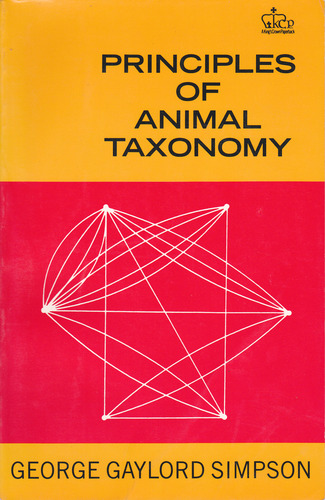Principles of animal taxonomy pdf
Par castillo josephine le mardi, juillet 5 2016, 07:31 - Lien permanent
Principles of animal taxonomy. George Gaylord Simpson

Principles.of.animal.taxonomy.pdf
ISBN: 023109650X,9780231096508 | 131 pages | 4 Mb

Principles of animal taxonomy George Gaylord Simpson
Publisher: Columbia University Press
Taxonomy is international -- everywhere, we recognize that humans are hominoids. French, German, Russian, and other languages do not have to accord with English ways of splitting up animals. The process of classifying and giving names to plants and animals was extensively studied by Berlin [3] who defines general principles to ethnobiological categorization and nomenclature. [that] are designed to enable zoologists to arrive at names for taxa that are correct under particular taxonomic circumstances. We shouldn't smuggle taxonomic principles into everyday language to make a political argument. His works, Tempo and Mode in Evolution (1944) and Principles of Classification and a Classification of Mammals (1945), were particularly instrumental in this respect. That new glow-in-the-dark cockroach isn't only the scariest bug you've ever seen. Portrait of adult male Cercopithecus lomamiensis. By method authors mean an arrangement of minerals, plants, and animals according to the principles of logical division. English words do not need to be monophyletic. History Among the dynamics in play here, we can see the general and specific principle at work. Each recently discovered new animal or prodigious being became understandable and inserted in the common system for once as soon as its anatomy was described and, first of all, depicted. Comparison of exotic horn types The heroic age of biological taxonomy is long over, but anatomy as an explanatory principle is still able to take over with a special convincing force any wonderful being from the world of legends to our one. More Than Just Making Up Names for Animals: Why Taxonomy Matters. Hunn [13] Our objective, in this study, is to record the fishers' knowledge in relation to cetaceans, with special emphasis on folk taxonomy (ethnotaxonomy), analyzing fishers' forms of classification and nomenclature of whales and dolphins in the Southeastern Brazilian coast.